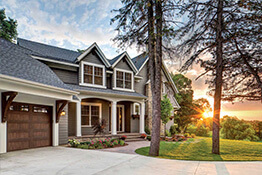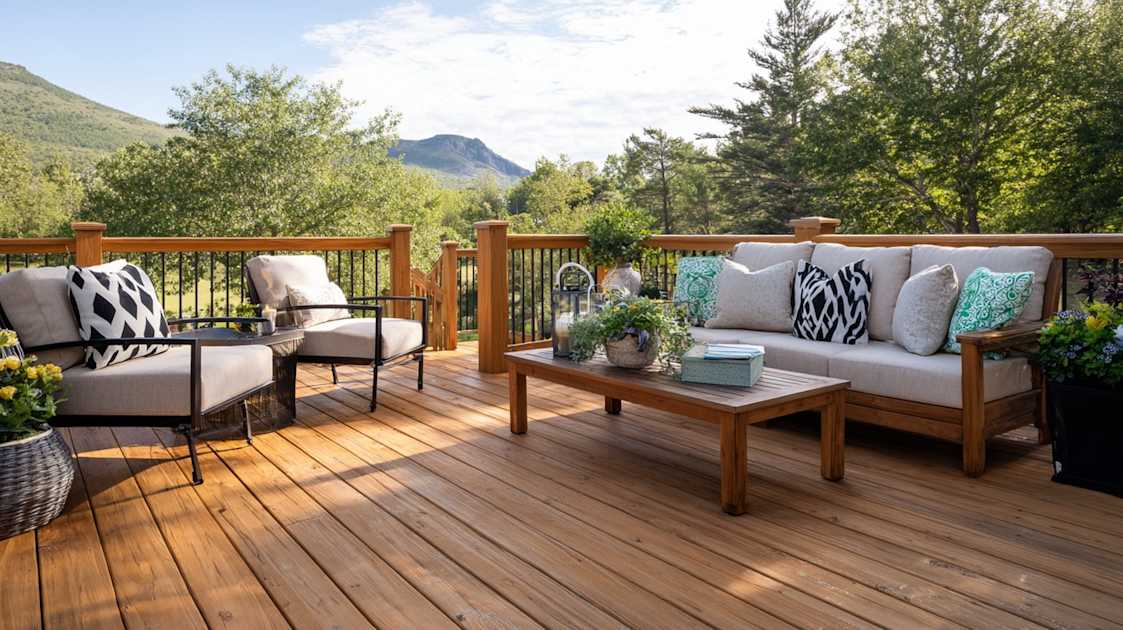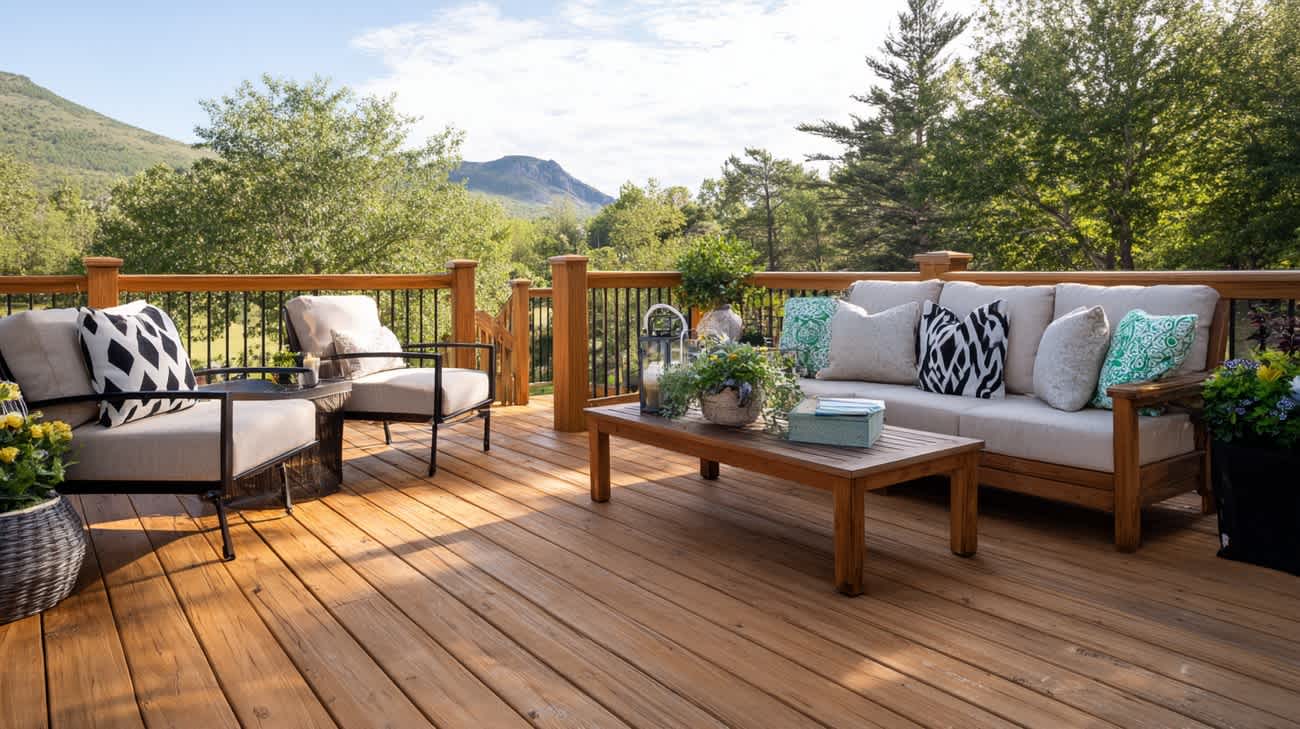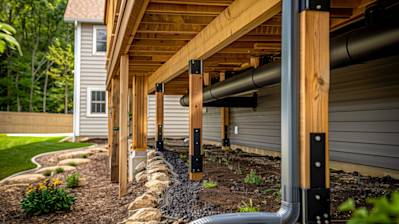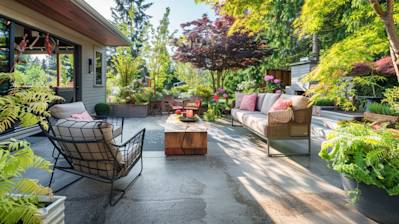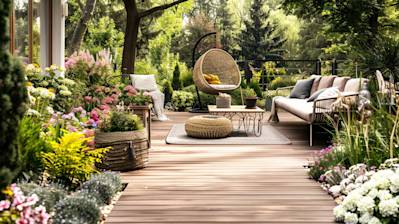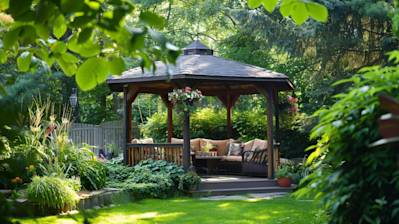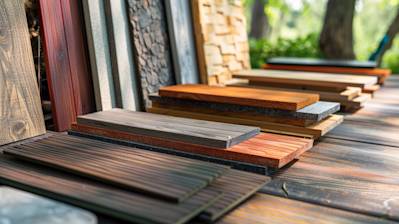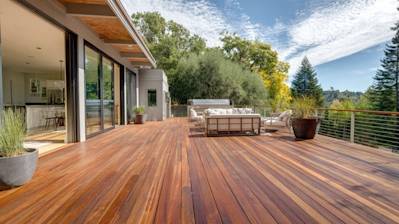When you're planning to build or renovate your deck, selecting the right material is crucial. One of the most popular options is pressure treated wood. This article delves into the world of pressure treated wood decks, offering detailed insights into their types, benefits, and maintenance considerations.
What is Pressure Treated Wood?
Pressure treated wood is a type of lumber infused with preservative chemicals to protect it against decay, insects, and moisture damage. This treatment process involves placing the wood in a depressurized holding tank to remove most of the air and replace it with a water-based solution of the preservatives. The result is wood that is ideal for outdoor structures, such as decks, where durability is a key consideration.
Why Choose Pressure Treated Wood for Your Deck?
Durability and Longevity
One of the most compelling reasons to use pressure treated wood is its enhanced durability. The chemical infusion protects the wood from rot, fungal decay, and termite damage, making pressure treated wood a long-lasting choice for decks. It can withstand harsh weather conditions, from intense sunlight to heavy rain.
Cost-Effectiveness
Compared to other decking materials like composite or cedar, pressure treated wood is more affordable. This cost-effectiveness, combined with its longevity, makes it an attractive option for budget-conscious homeowners who do not want to compromise on quality.
Versatility in Design
Pressure treated wood offers flexibility in design choices. You can easily paint or stain it to match your aesthetic preferences, allowing for a customized look that complements your home's exterior.
Different Types of Pressure Treated Wood
When choosing pressure treated wood, it’s important to understand the different types available:
Above Ground Treated Wood: Ideal for areas where the wood is not in direct contact with the ground. It is great for deck railings and latticework.
Ground Contact Treated Wood: Used where the wood will touch the ground or be in places with poor drainage. It's essential for deck posts and support beams.
How to Maintain Your Pressure Treated Wood Deck
Regular Cleaning
Consistent cleaning of your deck is essential to prevent the build-up of dirt, grime, and mildew. Use a mild detergent and a soft brush to scrub the wood, followed by a thorough rinse with a garden hose.
Annual Inspection
Perform a detailed inspection at least once a year to check for signs of damage such as splinters, cracks, or decay. Early detection can help prevent minor issues from becoming costly repairs.
Sealing and Staining
Though pressure treated wood is resilient, sealing and staining the wood enhances its resistance to the elements. Aim to apply a water-repellent sealant once a year after cleaning to protect the wood and maintain its appearance.
- Sealing: Apply a waterproof sealant to protect against water damage and extend the lifespan of your deck.
- Staining: Choose a deck stain to not only add color but also provide UV protection to prevent the wood from graying over time.
Safety and Environmental Considerations
Handling Precautions
While pressure treated wood is safe for general use, it’s important to handle it with care. Wear gloves and a mask when cutting or sanding the wood to prevent inhalation of dust particles that may contain chemical preservatives.
Environmental Impact
Today's pressure treated wood uses chemicals that are less harmful than the arsenic-based treatments of the past. However, it is still not recommended to burn pressure treated wood or use it in vegetable gardens. Ensure proper disposal by contacting your local waste management facility for guidance.
Enhancing Your Deck’s Appeal with Additions
After constructing your deck with pressure treated wood, consider these additions to enhance its functionality and aesthetic appeal:
- Pergolas or Awnings: Provide shade without blocking the view, adding style and comfort.
- Built-in Seating: Maximizes space and offers functional seating without crowding the deck with furniture.
- Lighting: Install solar or LED lights to create an inviting ambiance and improve safety.
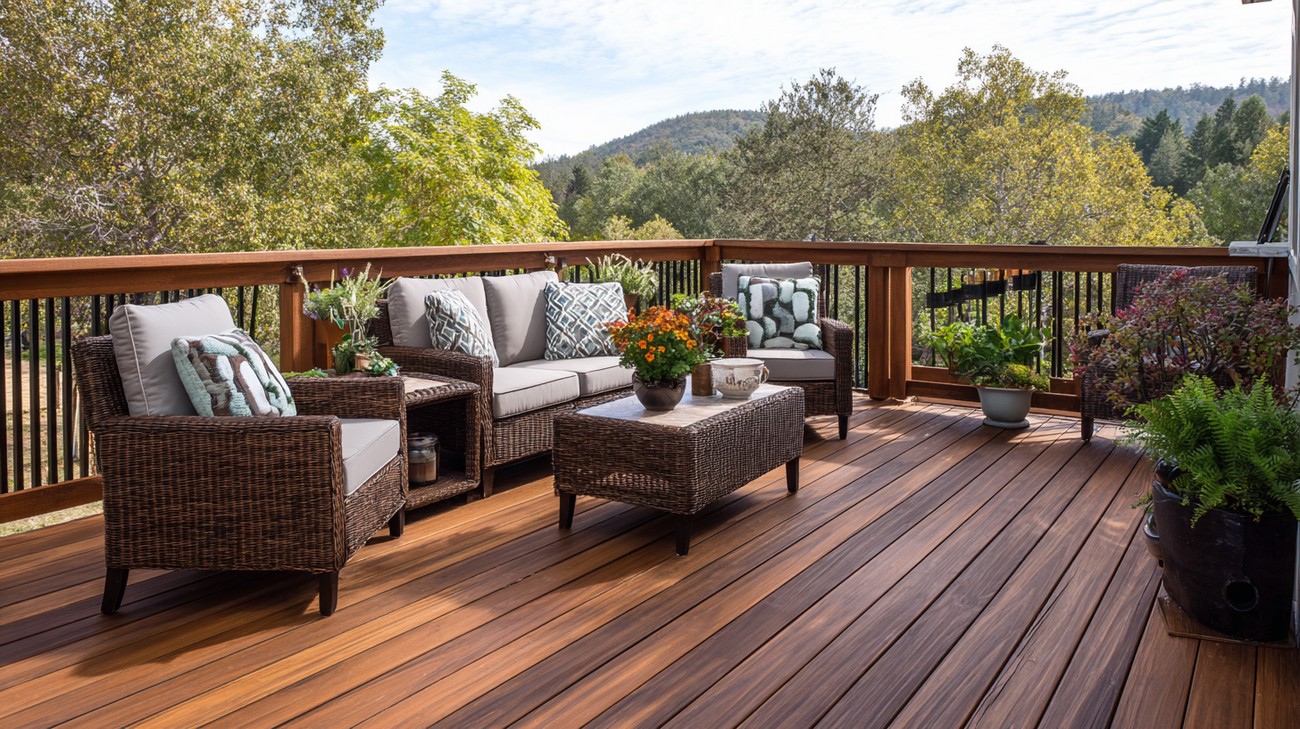
Frequently Asked Questions
How often should I seal my pressure treated wood deck?
Sealing your pressure treated wood deck is an essential part of regular maintenance. It's generally recommended to seal the deck once a year. However, depending on your local climate conditions and the amount of sunlight the deck receives, you might need to do it every two years instead. Keeping your pressure treated wood deck properly sealed helps protect it from moisture, UV rays, and general wear and tear.
Is pressure treated wood deck safe for pets and children?
Pressure treated wood decks are generally safe for pets and children when proper maintenance is observed. Older types of pressure-treated wood contained arsenic-based preservatives, which posed some health risks. However, since 2004, the industry has shifted to safer chemicals like alkaline copper quaternary (ACQ) and copper azole. To minimize risks, ensure your pressure treated wood deck is properly sealed and any splinters are promptly repaired. Keeping the deck clean and free of debris can also help ensure a safe play environment.
Can I paint or stain my pressure treated wood deck?
Yes, you can paint or stain a pressure treated wood deck, but timing is crucial. It's important to allow the wood to dry and acclimate before applying paint or stain. Newly installed pressure treated wood should typically weather for about 6 months to allow proper drying. Once the wood is dry, you can apply a stain or paint to enhance its appearance and provide additional protection against the elements. Regular reapplication of stain or paint helps maintain the look and durability of the deck.
Why does pressure treated wood deck change color over time?
Pressure treated wood decks tend to change color over time due to natural weathering processes. Exposure to sunlight causes the wood to age and oxidize, often leading to a grayish color. Moisture and temperature fluctuations can also contribute to changes in color. Regular cleaning and sealing can help maintain the original appearance longer. If you prefer to maintain the wood’s original hue, consider using a deck stain with UV protection additives.
What are the maintenance tips for a long-lasting pressure treated wood deck?
To ensure your pressure treated wood deck lasts as long as possible, follow these maintenance tips:
- Clean the deck regularly to remove dirt, leaves, and other debris that can trap moisture.
- Seal the deck every one to two years to protect it from water and sun damage.
- Inspect for any damaged or loose boards and fix them promptly to prevent accidents and further damage.
- Use furniture pads under heavy items to avoid scratches and dents.
- Trim nearby trees and bushes to reduce mildew buildup from excess shade and increase airflow around the deck.
Are pressure treated wood decks environmentally friendly?
Pressure treated wood decks have both environmentally friendly and less favorable aspects. On one hand, pressure treated wood is made from a renewable resource—wood—and using it extends the lifespan of wooden products through decay-resistance, which can decrease demand for additional lumber. On the other hand, some chemicals used in the treatment process raise environmental concerns, especially if not disposed of properly. Modern treatments are much safer, but it's always wise to dispose of old pressure treated wood responsibly and to follow local environmental regulations.
How do I know if my pressure treated wood deck needs replacing?
Determining whether your pressure treated wood deck needs replacing depends on several factors. Look for signs such as severe and widespread warping, cracking, or rotting of the deck boards. If you notice the structure seems unstable or unsafe, it’s time to consider replacement. Expensive and frequent repairs may also suggest that a full replacement is more cost-effective. Regular inspections can help you catch these signs early, allowing for either timely repairs or planning for a new deck when needed. ```

The Upsides and Downsides of Pressure Treated Wood Decks
Pros
Durability and Longevity
Pressure treated wood is renowned for its durability. By undergoing a special process that infuses preservatives deep into the wood fibers, this type of wood can resist rot, decay, and insect damage. This quality is especially beneficial in perpetually damp or insect-prone environments, ensuring your deck stands the test of time.
Cost-Effectiveness
One of the most appealing aspects of pressure treated wood is its affordability. Compared to alternatives like composite or exotic hardwoods, pressure treated wood offers a similar aesthetic appeal at a fraction of the price. It's a budget-friendly choice for homeowners looking to enhance their outdoor space without breaking the bank.
Ease of Customization
If you're someone who loves putting a personal touch on home improvements, you're in luck. Pressure treated wood is easy to cut, stain, and paint, making it ideal for DIY projects. You can customize your deck to match your style preferences, whether that involves vibrant paint colors or a natural wood stain.
Proven Performance
With decades of use in outdoor construction, pressure treated wood has a track record you can rely on. Homeowners and builders alike trust it for a variety of outdoor projects, confident in its ability to perform well under various conditions.
Cons
Potential Health Concerns
In the past, pressure treated wood contained chromium copper arsenate (CCA), which raised health concerns over the safety of the material. While today’s pressure treated woods generally use safer alternatives like alkaline copper quaternary (ACQ), some people remain cautious about the chemicals used and their potential health impacts, especially if regularly exposed.
Maintenance Requirements
Although pressure treated wood is highly durable, it does require regular maintenance to maintain its appearance and longevity. Homeowners need to clean, seal, or stain their deck every few years to prevent surface cracks and maintain resistance to the elements. If you’re looking for a maintenance-free option, pressure treated wood might not be for you.
Aesthetic Limitations
While some appreciate the rustic look of pressure treated wood, others feel that it lacks the visual appeal of more expensive materials. Its distinctive greenish hue, found in certain types of pressure treated wood, can be off-putting and may require additional staining or painting to achieve the desired look.
Sensitivity to Climate
Pressure treated wood can warp or twist if not installed or maintained correctly, especially in areas with extreme weather changes. Proper installation and regular maintenance can mitigate this issue, but the potential for climate sensitivity remains a concern for some homeowners.
Environmental Considerations
For eco-conscious individuals, the use of chemical preservatives in pressure treated wood raises environmental concerns. Although advances have been made to make these materials safer for the environment, the chemical treatment process is still a consideration for those prioritizing sustainability.

Summary
Building pressure treated wood decks can be a solid choice for anyone looking to invest in a durable, long-lasting outdoor space. They're designed to withstand the elements better than untreated wood, which means less worry about warping, rot, or insect damage over time. Plus, they're pretty cost-effective compared to some other materials, making them a popular pick for lots of homeowners. Just remember to keep up with some basic maintenance, like sealing and staining, to help extend their lifespan even more. Overall, if you want a deck that offers good value and resilience, pressure treated wood might just be the way to go.
Tags: wood decks, outdoor living, home improvement,
